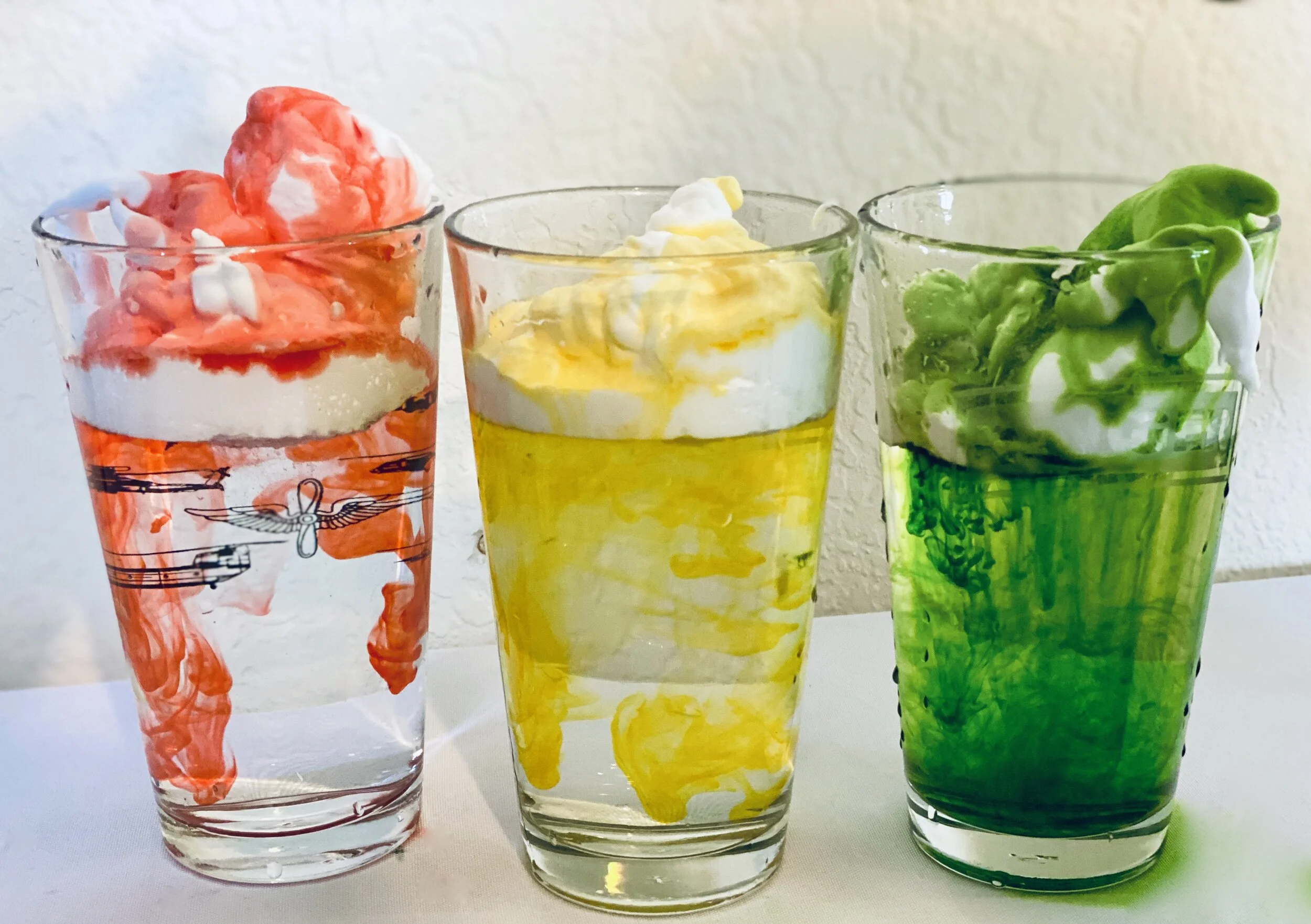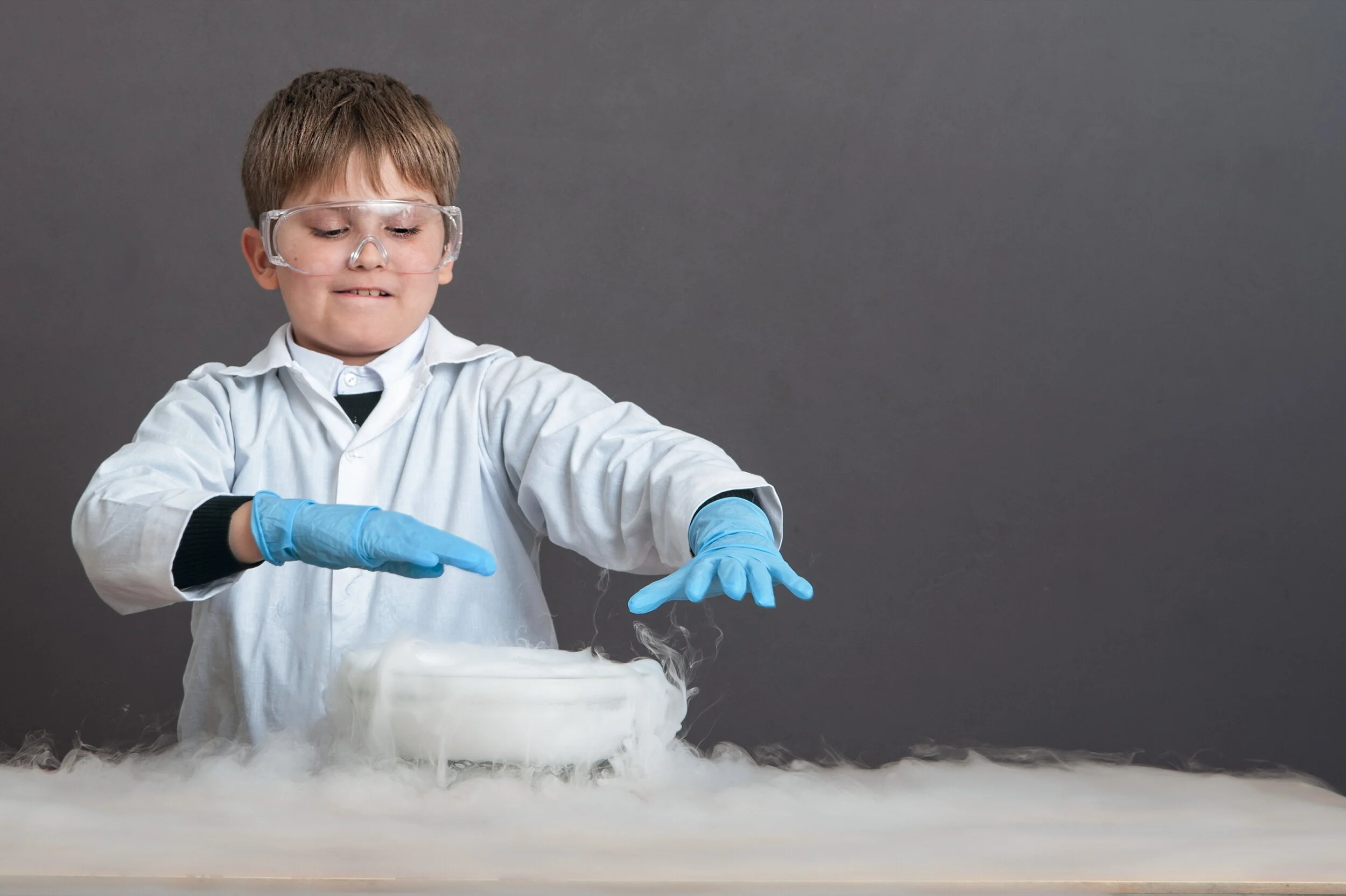Water Everywhere! 5 Water Cycle Activities You Can Do to Show That Water is All Around Us (Using Items You Probably Already Have Lying Around the House!)
Water is EVERYWHERE! Did you know that water covers about 71% of the entire world? Or that our bodies are made of about 60% water? There is even water in the air surrounding us-even thought you can’t see it? Or can you…?
Using inspiration from the book Down Comes the Rain by Franklyn M. Branley (which subscribers received as part of their Singing in the Rain themed box!) and a few things lying around the house, lets see how water moves from one state (solid, liquid and gas) to the other right before our eyes!
Make a Cloud-This is a super easy way to show water turning from a liquid to a gas. Place a tea kettle on the stove, turn the burner on to medium and wait for that ear-piercing whistle. (Or use your electric kettle like we did!) Steam AKA water vapor will begin flowing out to into the air and of course as it disperses it once again seems to “disappear.” No kettle? No problem. A pot of boiling water will do the same trick (and you can even add some rice or pasta to it and get an early start on dinner! 😉)
Rain Clouds in a Jar- This is a colorful way to show how when clouds get “too full” of water, the water falls as precipitation. Fill a clear glass or jar 3/4 of the way with water. Spray shaving cream on top to represent the cloud. While that settles, mix a few small cups with water and food coloring. using a small spoor or dropper, place drops of the colored water onto your clouds. Watch the rain fall and swirl into the water! It’s not exactly scientific but fun, nonetheless!
Disappearing Act-When water evaporates it tuns from a liquid to a gas and is still in the air around us. Have your kiddos tell you how long you think it will take for the water to “disappear” then place a teaspoon of water on a saucer and set it aside. Check it periodically as you go about your day. How much time did it take? Whose guess was closest? What do you notice is left behind after the water evaporates?
Out of Thin Air-With Disappearing Act and Making Clouds we’ve shown two ways how liquid water disperses into the air in the form of water vapor. But how do go the other diriceion? How do we show that water in the air can condense-change from a gas to a liquid. Condensation. Place a cup of ice water on the counter and leave it to sit for about 30 minutes. What happens to the outside of the glass? The air surrounding the cup is warmer than the air inside the cup. The warm water vapor cools as it touches the cup and forms droplets. This is a fun one to catch with a time lapse video. Here’s ours! Keep your eyes on the mug!
Watch Your Breath-While “seeing your breath” outside on a cold winter day is a normal occurrence, it’s not likely to happen in the middle of spring. Unless…stand super close to a window or mirror and let out a good puff of air. (Pro Tip: Take a nice deep breath and let it out with a Haaaahhhh or Hooooooo sound for maximum effect.) Voilà! Water vapor abounds!
BONUS!
Sublimation occurs when water goes from a solid (ice) directly to a gas (water vapor AKA steam). We don’t often witness this change as is not a part of the evaporation->condensation->precipitation water cycle we are familiar with. This one takes a little bit of preparation but if you can get your hands on some dry ice (not really, please use protective gloves and tongs when handling dry ice as it can “burn”) then you can re-create this unique process. Add large chunks of dry ice (solid carbon dioxide-please use in a ventilated area) to hot water (preferably boiling) in a styrofoam or other insulated container. Right away you should see the fog forming-sublimation. The dry ice has warmed so quickly that it goes directly from a solid to a gas! Pretty neat!
Be safe and have fun!
**Kiddos, if you’re reading this page on your own, make sure you ask for a grown-up’s help with these projects, especially the ones that require a stove, hot water or dry ice. Dry ice can cause severe frostbite)!!!**




